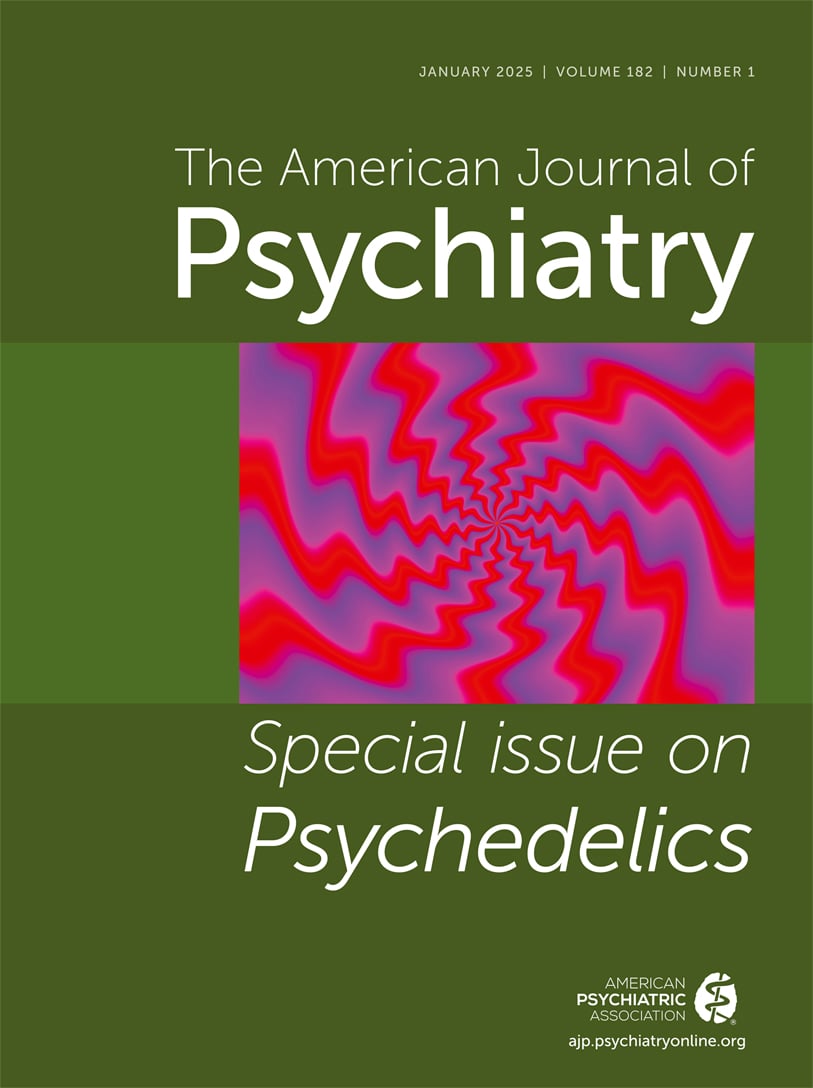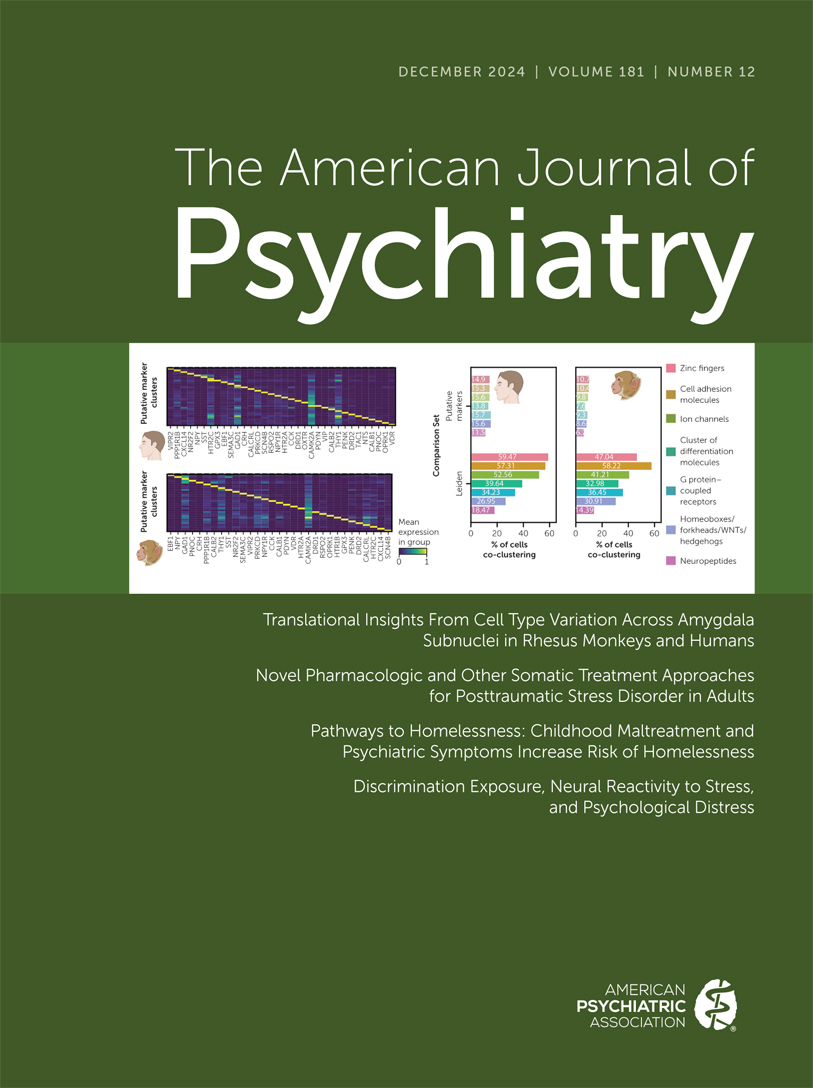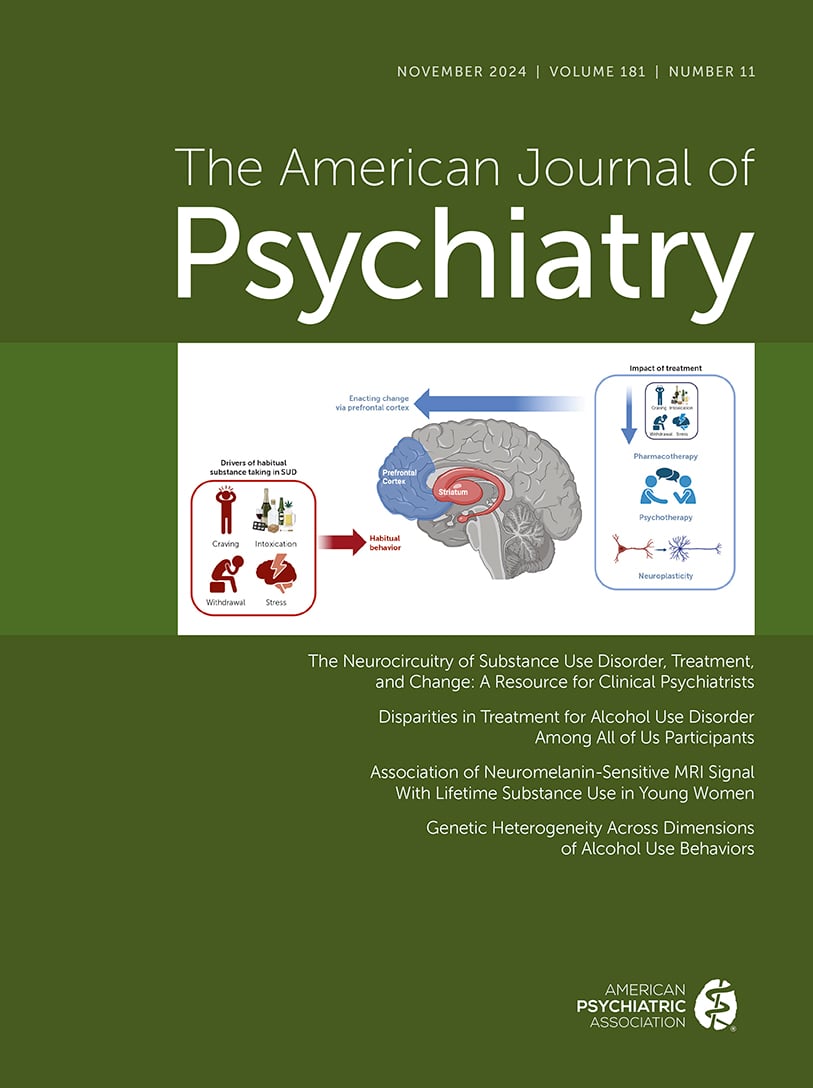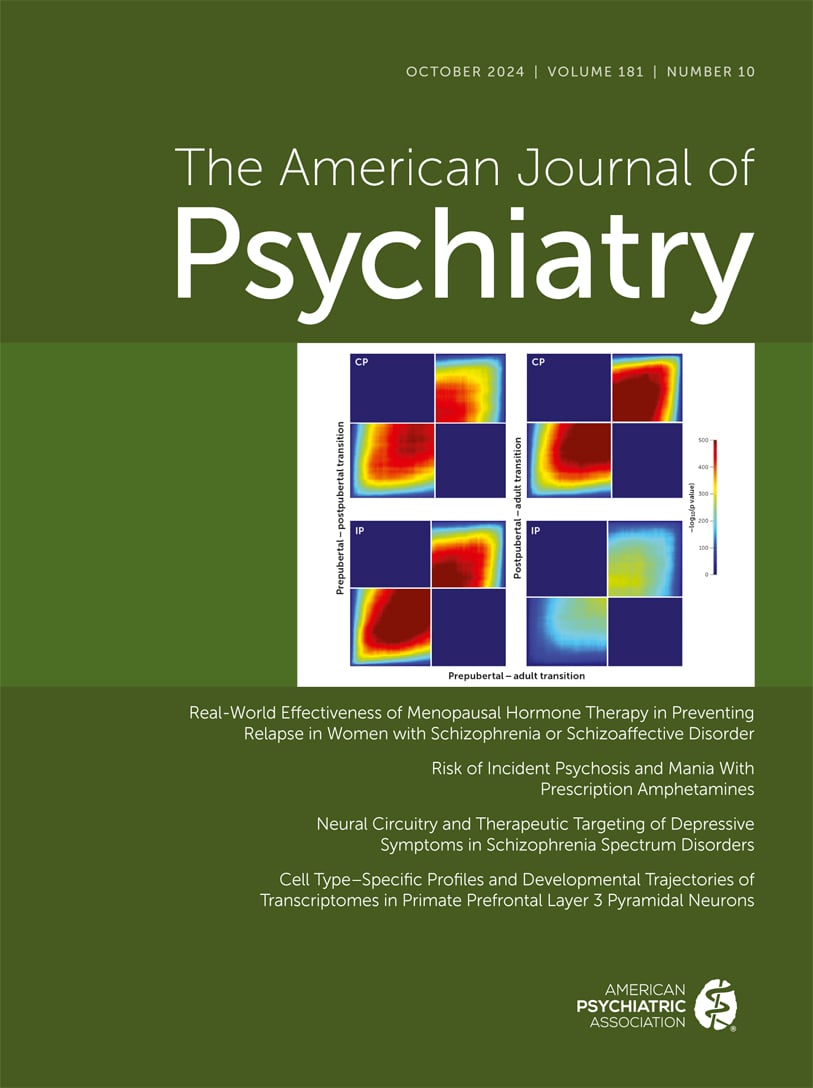American Journal of Psychiatry
- Volume 126
- Number 6
- December 1969
Article
Publication date: 01 December 1969
Pages777–788Although the vocabulary of psychiatry does not exceed that of many other disciplines in size, it is unusually fluid, changing rapidly from time to time and from place to place. Psychiatrists have thus been accused at times of overindulgence in terms and ...
https://doi.org/10.1176/ajp.126.6.777Publication date: 01 December 1969
Pages789–795The relative neglect of the chronically ill psychiatric patient in community mental health planning emphasizes the need for new treatment methods and resources. This paper presents an eight-year experimental application of psychoanalytic principles in an ...
https://doi.org/10.1176/ajp.126.6.789Publication date: 01 December 1969
Pages796–801Common current practice is to prescribe psychotropic drugs so that a specified daily amount is administered in equally divided doses on a three to six times a day schedule. The authors contend that this procedure rests on no valid scientific basis. They ...
https://doi.org/10.1176/ajp.126.6.796Publication date: 01 December 1969
Pages802–806The author traces the development of white racism in the United States back to the social and religious environment of 16th century Europe and the later Revolutionary era in America. He outlines the functions it has served and its transmission from one ...
https://doi.org/10.1176/ajp.126.6.802Publication date: 01 December 1969
Pages807–813Driving records of 271 people hospitalized for schizophrenic, psychoneurotic, and personality disorders were compared with those of 687,228 people in the same general driving environment. Patients with personality and psychoneurotic disorders had higher ...
https://doi.org/10.1176/ajp.126.6.807Publication date: 01 December 1969
Pages814–822Klinefelter's syndrome is a chromosomal abnormality resulting in hypogonadism. Intellectual impairment and/or neuropsychiatric disorder are present in many cases. The variety of psychopathology accompanying the syndrome is reviewed from the literature and ...
https://doi.org/10.1176/ajp.126.6.814Publication date: 01 December 1969
Pages823–839The laboratory movement arose in the 1930s as an effort to develop educational action programs that could teach citizens to function more effectively and democratically in a variety of group settings. It has developed in many divergent directions, some of ...
https://doi.org/10.1176/ajp.126.6.823Publication date: 01 December 1969
Pages840–845This discussion of T-groups focuses on questions of ecology, selection, leadership, and ethics. The authors identify four groups of people who they feel should be systematically excluded from T-groups: psychotics, characterologic neurotics, hysterics, and ...
https://doi.org/10.1176/ajp.126.6.840Publication date: 01 December 1969
Pages845–850Expertise in leading therapeutic groups requires one's immersion and involvement as a whole person. The integrated mixture of the experiential and didactic in training programs may allow more group leaders to function humanistically as well as ...
https://doi.org/10.1176/ajp.126.6.845Publication date: 01 December 1969
Pages850–857Problems in teaching psychiatry and group psychotherapy in small groups vary with the type of setting, frequency and length of meetings, and specific goals of the group. Problems of dependency, oppositional patterns to the goals of the group, and ...
https://doi.org/10.1176/ajp.126.6.850Publication date: 01 December 1969
Pages857–862The Human Relations Training Laboratory, a problem-centered patient-group education program utilizing the feedback method, encourages self-expression, helps participants to recognize and develop their own assets and resources, enables them to contribute ...
https://doi.org/10.1176/ajp.126.6.857Publication date: 01 December 1969
Pages862–868Voluntary participation in group seminars is offered to freshman medical students at Cornell Medical College in an effort to make the medical student, and hence the graduate physician, a more sensitive, empathic, and self-aware individual. The authors ...
https://doi.org/10.1176/ajp.126.6.862Publication date: 01 December 1969
Pages868–873The author describes three cases of emotional disturbance aggravated by sensitivity training. No quackery was detected, but the absence of ethical standards and an apparent abrogation of responsibility by the trainers and their sponsoring institutions was ...
https://doi.org/10.1176/ajp.126.6.868Publication date: 01 December 1969
Pages882–884The widespread use of ethchlorvynol as a hypnotic has led to observations that should make its users and prescribers aware of potentially serious side effects. The authors present a case involving toxic amblyopia and peripheral neuropathy, which were ...
https://doi.org/10.1176/ajp.126.6.882Publication date: 01 December 1969
Pages884–888The author describes and emphasizes the value of a symptom and behavior rating checklist for teachers' use in drug studies with children. Factor analysis of the scale produced five factors that gave reliable subscales over a one-month period. A treatment ...
https://doi.org/10.1176/ajp.126.6.884Publication date: 01 December 1969
Pages888–891The author considers charges that the American Board of Psychiatry and Neurology is biased against examination candidates who are trained in state hospitals or abroad, or who are members of minority groups. He concludes that bias does not exist and that ...
https://doi.org/10.1176/ajp.126.6.888Publication date: 01 December 1969
Pages892–897The author recalls this year's anniversaries of events and individuals prominent in the history of psychiatry and briefly examines their clinical, theoretical, or legal contributions to the field.
https://doi.org/10.1176/ajp.126.6.892Publication date: 01 December 1969
Pages897–899The authors describe the basic legal and medical requirements for psychiatric disability benefits under social security law and regulations. They outline procedures used in assessment of impairment, stressing the need for factual observations. The active ...
https://doi.org/10.1176/ajp.126.6.897Past Issues
View Issues Archive
Vol. 182 | No. 1

Vol. 181 | No. 12

Vol. 181 | No. 11
